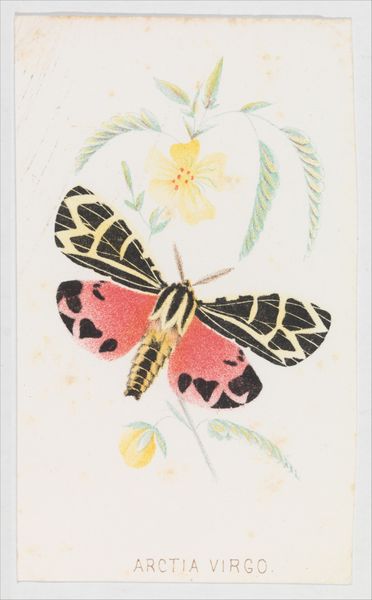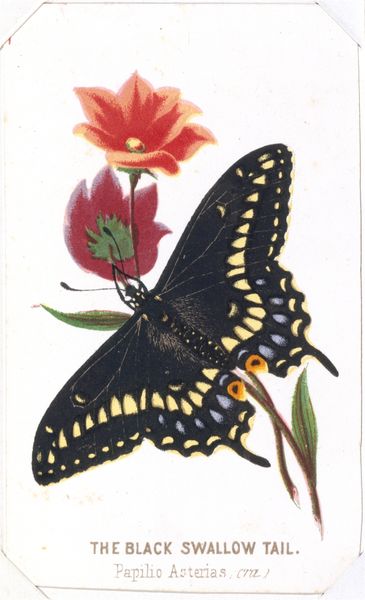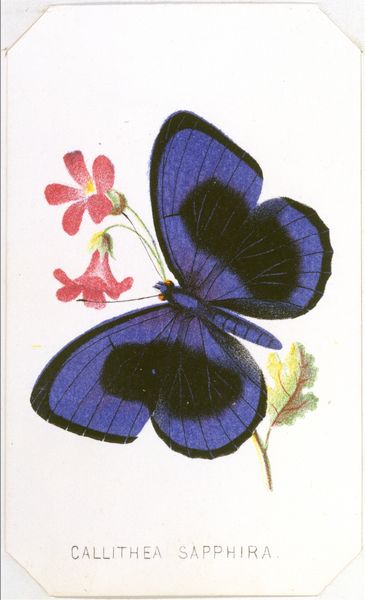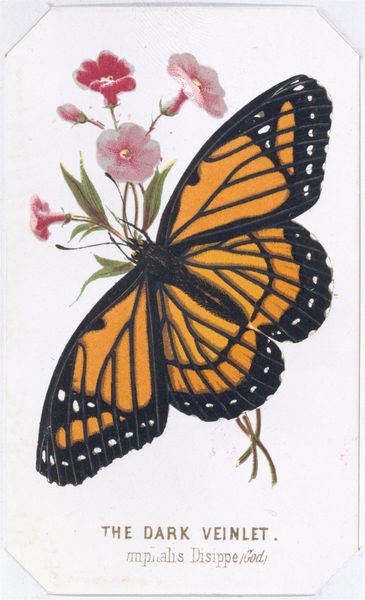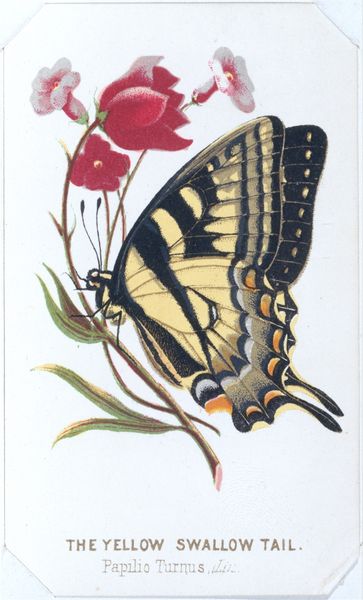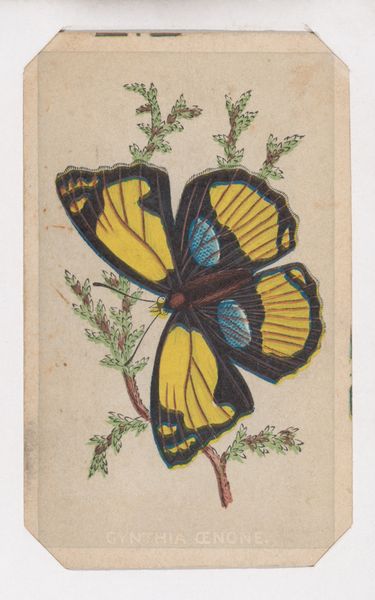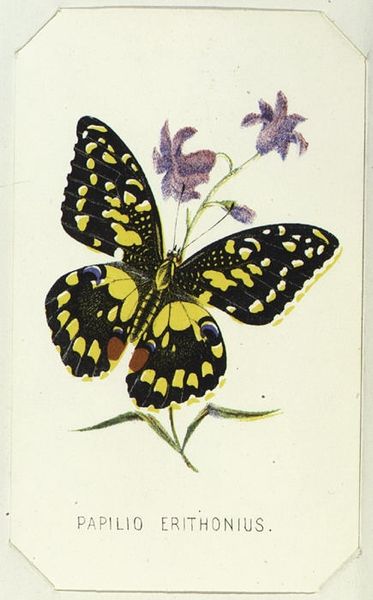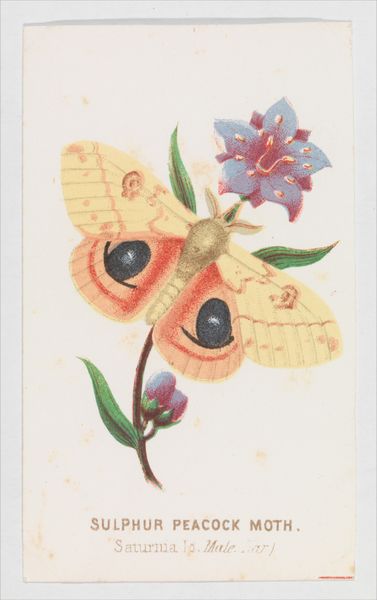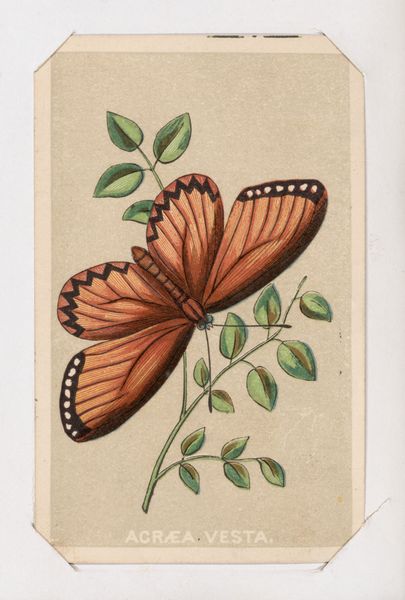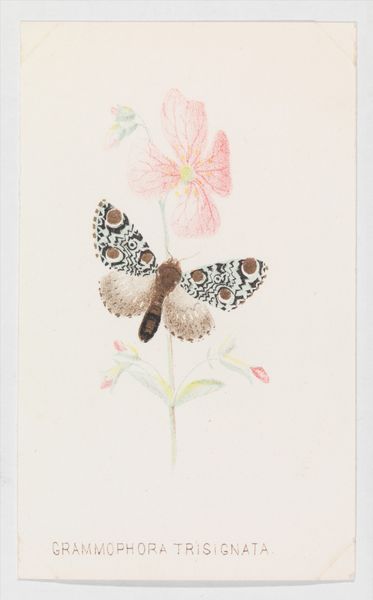
Junonia Orithyia from The Butterflies and Moths of America Part 1 1860
0:00
0:00
drawing, print, watercolor
#
drawing
# print
#
watercolor
#
watercolor
Dimensions: sheet: 4 1/8 x 2 3/8 in. (10.4 x 6.1 cm)
Copyright: Public Domain
Curator: Oh, how lovely. A beautiful study of a butterfly, a Junonia Orithyia. The image is attributed to Louis Prang & Co., created around 1860, and comes to us from "The Butterflies and Moths of America." It looks like a combination of drawing, watercolor, and print. Editor: The violet hues are so captivating, they create an ethereal and almost melancholy mood. And those little eye spots on the wings—are those for defense or deception? It feels very evocative, like a fragment of a forgotten poem. Curator: Precisely. These kinds of natural history illustrations were part of a larger cultural trend during that period—a desire to document and classify the natural world, fueled by scientific exploration. Japonisme also appears to have been an influence with asymmetrical designs focusing on a subject. Think of Audubon’s bird prints, but on a smaller, more intimate scale. Editor: You know, the butterfly itself has such a powerful symbolic presence. It represents transformation, yes? But I'm curious about its presence here, perched so close to these deep violet flowers. Violet is linked to memory and reflection; I wonder if that adjacency creates a deeper visual conversation about the transient nature of beauty, or the past. Curator: Certainly. And we need to also understand Prang's influence through chromolithography, which allowed for a wider dissemination of colorful prints. It was about making knowledge accessible, wasn’t it? Bringing the beauty and complexity of nature into people's homes. The Junonia Orithyia could become known across a wider population because of works like this. Editor: So, the aesthetic appreciation connects to democratization? I think I see it. The colors alone create an engaging image, of course. The attention to detail draws you in as well: the butterfly's segmented body, and the delicately painted flowers above all lend a sense of credibility, so that it’s not only beautiful, but almost like a tool. Curator: A beautiful integration, don't you agree? Editor: Indubitably! Thanks for helping me see the picture through the wider lenses of both symbolism and historical availability.
Comments
No comments
Be the first to comment and join the conversation on the ultimate creative platform.

